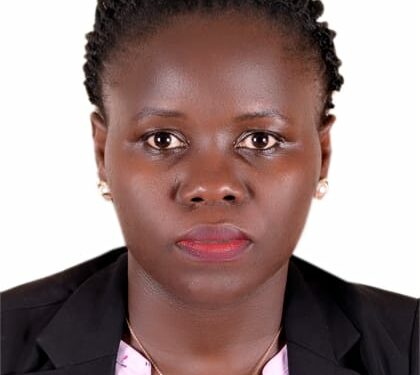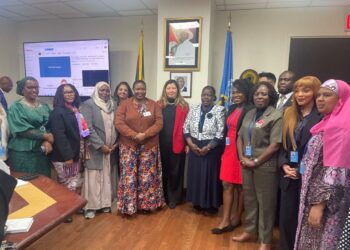Jinja: Behind the gates of their luxurious bungalow situated along the upscale Kiira Road, one of Jinja City’s wealthiest families, the Namadopes -John Namadope and his wife Sarah Namadope (not real names), were struggling to contain an unknown crisis.
Their academically-bright children, 17-year-old Joel Namadope Junior and 15-year-old Brenda Namadope, who were students at some of Kampala’s top schools, but they could not concentrate in class.
Despite their parents’ abundance of resources, social influence, and fame, the teens’ grades were slipping, and their behaviour was becoming increasingly erratic.
“…let’s give them a bit of time, they will style up and become better children…,” John Namadope, Joel and Brenda’s father, would respond to concerned relatives.
However, as the months went by, Joel and Brenda’s behaviour worsened.
They became withdrawn, isolated, and moody.
The Namadopes, described as an illustrious couple, which would always attract public attention, was baffled, and despite seeking advice from teachers, counselors, and even their church leaders, they could not pinpoint the problem.
In desperation, the couple was almost tempted to seek answers from traditionalists, with the mistaken belief that their children were bewitched by some bad neighbors or jealous relatives.
“…we were so desperate for answers that we considered visiting traditional healers,” John Namadope recalled. “We thought maybe some of our neighbours had cast a spell on our children…”
Sarah Namadope, Joel and Brenda’s mother, added, “…It’s embarrassing to admit, but we were so desperate that we were willing to try anything…we even went as far as to consult with some self-proclaimed prophets who claimed they could ‘deliver’ our children from the supposed evil spirits…”
However, it was not until they stumbled upon a support group for parents of children struggling with addiction that they finally discovered the truth. Joel and Brenda were struggling with drug addiction.
The truth the Namadope couple wished they had known sooner.
“…We thought we had done everything right,” John Namadope said, fighting back tears. “We took them to church, taught them the Bible, we prayed every day and provided for all their needs. But somehow, they still got caught up in this mess…”
Sarah Namadope rejoined, “As parents, we felt like we had failed. We didn’t know what to do or where to turn, but we knew we had to get our children help…”
Joel and Brenda are now undergoing rehabilitation, and their parents are hopeful that they will overcome their addiction and get back on track.
According to Dr Juliet Nakku, the Executive Director Butabika Mental Health Hospital, there is an increase in the number of people living with mental illness.
Dr Nakku says the hospital originally designed for 550 beds is currently operating at double capacity with a disproportionate number of young people seeking treatment.
She says the majority of patients being treated for mental illness are young people, with many cases attributed to drug addiction.
We at Watchdog Uganda managed to talk to Dr. Racheal Alinaitwe, a highly respected consultant psychiatrist at Jinja Regional Referral Hospital to have a professional side of the issues at hand.
She says the rise of drug addiction among Ugandan teens is alarming, many parents are unaware of the problem until it’s too late.
“…we need to create awareness and provide support to families affected by this issue…”, she said.
Dr. Alinaitwe who is so passionate about psychiatry, notes that the most common mental health issues among adolescents in Uganda include substance use, depression, anxiety, and severe illnesses like bipolar affective disorder, epilepsy, and schizophrenia.
The prevalence of mental health issues among adolescents in Uganda is alarming, with studies indicating that approximately 20-25% of adolescents experience mental health challenges.
Key contributors include poverty, family instability (especially parental discord), peer pressure, genetic predisposition, academic pressure, lack of access to mental health services, and the impact of social media.
Comparison to Global Trends:
She says mental health issues in Uganda align with global trends. However, adolescents in low-resource settings like Uganda face unique challenges, such as poverty, limited access to mental health care, and cultural stigma.
Causes and Risk Factors.
Conflicts within families, exposure to domestic violence, academic pressure, bullying, and the influence of social media are major causes.
Social media, in particular, exposes adolescents to unrealistic standards, traumatic and pornographic content, and cyberbullying. Social media is also contributing to internet addiction among adolescents.
Socioeconomic Impact:
Poverty exacerbates mental health issues by limiting access to quality education, nutritious food, and healthcare services.
Adolescents in poorer communities are more likely to experience stress and hopelessness. As a result of poverty within the region, adolescents have been forced into child labor on the streets, sugar cane plantations, and brick-making sites where many have been exposed to alcohol and substance use.
The effects of the COVID-19 pandemic and lockdown are still evident within the community, especially with the increase in family conflicts, lost incomes for families and increased dropouts from school, increased academic pressures to catch up on lost school time and all these have greatly impacted mental health for the adolescents.
Role of Stigma:
Stigma around mental health prevents adolescents from seeking help. Mental health issues are often seen as a personal weakness, a curse or a spiritual issue, leading to shame and isolation.
According to experts, stigma refers to a mark or label that is associated with shame, disgrace, or approval. In the context of this article, stigma refers to the negative attitudes, beliefs and behaviors that society directs towards individuals with mental health conditions.
Many parents are not willing to seek conventional mental health care and first take their adolescents to spiritual and traditional healers.
“…even when brought to the hospital for care, adolescents who are in school find it challenging to take their medication regularly and seek permission from the school for medical reviews because they have to explain to peers and school administration their mental health challenges…”, Dr Alinaitwe explains.
This, she says affects adherence to clinical reviews and medication further worsening the mental health issues. The Namadopes’ story is a testament to the importance of seeking help and raising awareness about mental health issues.
“…we thought we were alone, but we are not,” John Namadope said. “There are many families out there struggling with the same issues. We hope that by sharing our story, we can help others find the courage to seek help…”
As Joel and Brenda navigate their new journey to recovery, their parents are speaking out, hoping to help other families avoid the same struggles.
Dr. Alinaitwe emphasizes the need for holistic support, including medication, psychotherapy, and counselling.
“…we need to work together to create a society where mental health is prioritized, and stigma is eliminated. We need to provide accessible and affordable mental health services to all Ugandans, regardless of their background or socioeconomic status,” Dr. Alinaitwe urged.
The Namadopes’ story is a loud reminder to Ugandan families (rich or poor), communities, and policymakers and implementing agencies to prioritize mental health and provide support to those affected.
Do you have a story in your community or an opinion to share with us: Email us at editorial@watchdoguganda.com













